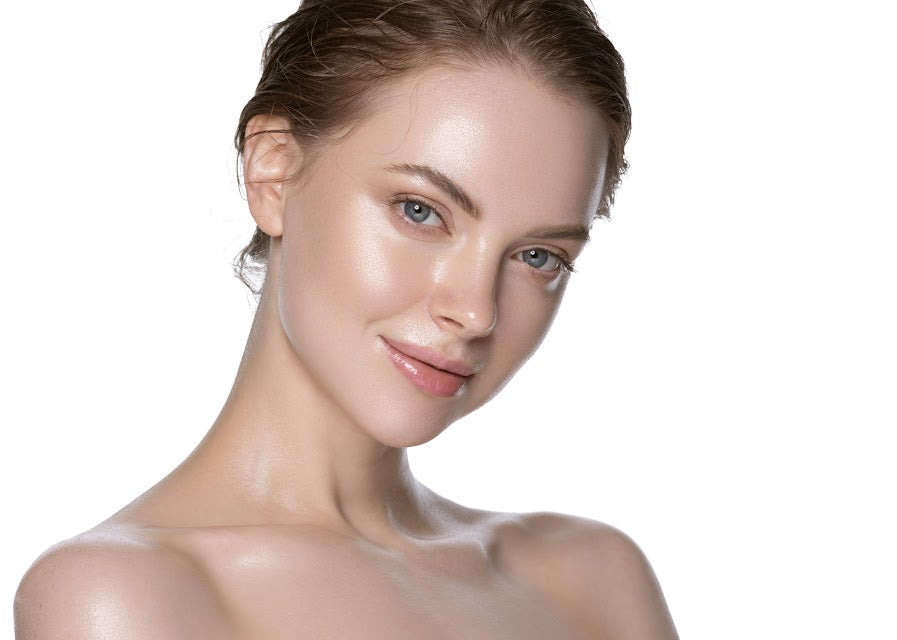
The Best Non-Comedogenic Oils for Face: Expert Picks & Benefits
Written by Dr Shamsa Kanwal - Dermatologist
Updated on October 6th 2025
When you hear the word oil, you might picture greasy skin, clogged pores, or breakouts. When choosing skincare, it helps to know which oils are non-comedogenic and safe for daily use. Some oils are too heavy and pore-clogging, while others are lightweight non-comedogenic face oils that hydrate without congestion, suitable even for oily or acne-prone skin.
Let’s look at what non-comedogenic oils for the face are, why they matter, and which ones are best for your skin.
Key Highlights
-
Non-comedogenic means less likely to clog pores, but results depend on skin type, full formula, and how much you apply.
-
Squalane leads the list of non-comedogenic face oils, with jojoba, grapeseed, hemp seed, rosehip, argan, and sunflower as strong options.
-
Oily or acne-prone skin should use lightweight, linoleic-rich oils. They should use very thin layers after water-based serums.
-
Patch test first and use two to three drops to lock in hydration without heaviness, then let oil absorb fully before sunscreen.
What is Non-Comedogenic?
The word comedogenic comes from comedones, the medical term for clogged pores. Comedones show up as blackheads or whiteheads and can lead to acne breakouts [1]. When a product is described as non-comedogenic, it means the ingredient or formula is less likely to block pores in typical use [2]. Think of it as lower risk, not zero risk, since results still depend on skin type, the full formula, and the amount applied.
What are Non-Comedogenic Oils?
Non-comedogenic oils are plant-derived face oils that hydrate, cushion, and protect without the heavy, pore blocking feel of richer options. Unlike thicker choices such as coconut oil or wheat germ oil, these lighter textures suit combination, oily, and acne-prone skin as well as dry or sensitive types. They supply essential fatty acids, antioxidants, and vitamins while still letting skin feel light and comfortable, which makes them an effective addition to a skincare routine.
If you want to double-check your products, try our free Pore-Clogging Ingredients Checker. Just paste in an ingredient list to see whether a formula contains potential pore-cloggers before adding it to your skincare routine.”
Benefits of Non-Comedogenic Face Oils
Here is what you can expect when you use non-comedogenic oils:
-
Hydration without Heaviness. These non-comedogenic face oils absorb quickly, softening skin without a greasy film.
-
Less Redness and Irritation. Many non-comedogenic oils are naturally calming, so reactive or inflamed skin often feels more settled.
-
Built-in Nutrition for your Skin. They deliver antioxidants and essential fatty acids that help defend against daily stress and visible aging.
-
A Stronger Skin Barrier. By locking in hydration and reducing moisture loss, they support a resilient barrier and greater comfort.
If you have reactive skin, you can explore our guide to the best face moisturizers for sensitive skin to find formulas that calm and protect alongside non-comedogenic oils. For barrier repair and hydration, Rush Hour Serum, our non-comedogenic serum for sensitive skin, combines soothing actives with barrier-strengthening ingredients to calm irritation and lock in moisture.
Best Non-Comedogenic Oils for Face: Dermatologist Picks
If you’ve ever wondered what oils are non-comedogenic, here are dermatologist-approved options. The best non-comedogenic oils for face are lightweight, rich in essential fatty acids, and absorb quickly without leaving residue. Here are some top Non-Comedogenic oils for the face:
Squalane Oil
Squalane is an ultra-lightweight, stable oil usually sourced from olives or sugarcane that mimics the skin’s own lipids [3]. It absorbs fast, leaves no slick residue, and helps hydrate while supporting the barrier. Many people with oily or acne-prone skin find that it balances the look of excess oil without clogging pores.
If you’ve been wondering why your skin is so oily all of a sudden, this article breaks down common triggers and solutions.
Jojoba Oil
Jojoba is technically a liquid wax that closely resembles human sebum [4]. This similarity helps it sit comfortably on the skin and support more balanced oil production. People with shiny or combination skin often notice better balance and softness with jojoba. It also provides vitamin E and antioxidants for daily protection [5].
Argan Oil
Often called liquid gold, argan oil nourishes without feeling heavy. It is helpful for dry, flaky, or sensitive skin, owing to vitamin E and essential fatty acids. Its fast absorbing feel makes it a versatile option for daytime comfort and nighttime repair [5].
Rosehip Oil
Rosehip oil is a lightweight, fast absorbing face oil pressed from the seeds of wild rose species, offering glow and comfort without a greasy feel. If you are working on uneven tone, scars, or a dull surface, rosehip is a good choice [6]. It contains provitamin A carotenoids and naturally occurring trans retinoic acid in low amounts, along with essential fatty acids, which support renewal and a more refined look over time. For more tips beyond oils, read our dermatologist-backed guide on how to get smooth skin.
Hemp Seed Oil
Hemp seed oil is a lightweight, green gold oil cold pressed from the seeds of the Cannabis sativa plant. This oil is a calming multitasker that suits skin prone to breakouts or visible redness [7]. Rich in omega-3 and omega-6 fatty acids, it helps strengthen the barrier, ease irritation, and improve overall texture with regular use. This is one of the most effective non-comedogenic oils for face if your skin tends to get shiny or congested.
Grapeseed Oil
Grapeseed oil is a pale, fast-absorbing oil extracted from the seeds of Vitis vinifera grapes, often produced as a byproduct of winemaking. It is high in linoleic acid, an essential fatty acid that acne-prone skin can lack [8]. Restoring this balance may reduce congestion and improve texture. The light finish layers well under makeup and can reduce the look of visible pores.
Sunflower Seed Oil
Sunflower seed oil is a gentle, neutral oil pressed from the seeds of the sunflower. Cosmetic grade versions are typically high in linoleic acid and feel breathable on the face. This soothing, non-comedogenic oil is a good match for sensitive or compromised skin. It provides vitamin E and antioxidants that support skin barrier repair while limiting moisture loss, so skin feels calmer and more comfortable [9].
How to Use Non-Comedogenic Oils Safely
Here are a few dermatologist-approved tips to get the most out of non-comedogenic oils:
-
Always patch test the oil first by applying a pea-sized amount along the jawline for 24 to 48 hours to check for redness, stinging, or new bumps. If your skin is very sensitive, extend the check to three nights.
-
Start by keeping your hair away from your face during application with a vegan silk headband. It’s gentle, non-pulling, and makes your routine feel more like a spa treatment at home.
-
When applying non-comedogenic oils, two to three drops are enough for the entire face. A thin film gives hydration without heaviness, which is especially important for non-comedogenic oils for oily skin.
-
Layer these oils after water based serums. At night, use them as the last step or mix one drop into your moisturizer to lock in hydration. In the morning, keep the layer very thin and allow full absorption before sunscreen. Do not apply oil over sunscreen.
-
Use one non-comedogenic oil for the face for two weeks before switching. Stacking multiple oils can overwhelm the barrier and raise the risk of congestion.
Oils are just one part of a complete routine. To round out your regimen, explore our list of the best ingredients for skin, recommended by dermatologists and learn how to combine them with non-comedogenic oils for even better results.
Do’s and Don'ts of Non-Comedogenic Oils

FAQs About Non-Comedogenic Oils
Here are a few of the most common questions about non-comedogenic oils:
-
Are essential oils non-comedogenic?
No, essential oils are not carrier oils and are not rated on the comedogenic scale. The larger risk with essential oils is irritation and sensitization when applied directly. If you use them, dilute in a non-comedogenic carrier such as jojoba or grapeseed, and avoid on acne-prone or very sensitive skin.
-
What are the best non-comedogenic oils for acne-prone skin?
Lightweight, linoleic-rich oils work best for acne-prone skin. Hemp seed, grapeseed, and rosehip help rebalance the fatty acid profile while squalane adds slip without heaviness. Start with two to three drops at night over damp skin, and give each oil two weeks before deciding if it suits you.
-
Can non-comedogenic oils help with acne scars?
Non-comedogenic oils can support tone and texture, but they cannot remove deep scars. Rosehip oil is suitable for improving post-acne scars because it supports renewal, while argan and sunflower seed oils help with comfort and barrier repair. Use consistently for eight to twelve weeks and pair with daily sunscreen for better results.
-
Are non-comedogenic face oils safe for daily use?
Yes, non-comedogenic face oils are generally safe for most skin types when applied in small amounts and layered properly. Use a thin film at night or mix one drop into your moisturizer, and let oils absorb fully before morning sunscreen. If you notice new congestion or irritation, reduce frequency and simplify the routine.
Did You Know?
Oils are not a modern trend. Historical records show that figures like Cleopatra used almond and moringa oils for skincare more than two thousand years ago. The modern difference is that today we can choose lighter, non-comedogenic oils and use them in precise amounts for better compatibility.
Takeaway
Non-comedogenic face oils can be a smart, skin friendly addition when you match the oil to your needs and apply it correctly. Choose lightweight options like squalane, jojoba, hemp seed, grapeseed, rosehip, argan, or sunflower based on your skin type, then patch test and use two to three drops over water based serums. Keep morning layers very thin and never apply oil over sunscreen.
Expect softer, calmer skin and better barrier support over time, not an instant fix for acne or scars. If you notice extra shine, congestion, or irritation, reduce use, switch to a lighter oil, and check in with a dermatologist.
References
https://www.sciencedirect.com/science/article/abs/pii/S0738081X04000458
https://www.tandfonline.com/doi/abs/10.1080/09546634.2018.1467540
https://www.mdpi.com/2075-4442/13/2/48
https://www.liebertpub.com/doi/abs/10.1089/jmf.2023.k.0062
https://pubs.acs.org/doi/full/10.1021/acsomega.4c04277
https://wjpr.s3.ap-south-1.amazonaws.com/article_issue/1596707793.pdf
https://onlinelibrary.wiley.com/doi/abs/10.1002/ejlt.200700276

 Hydration
Hydration
 Soothing
Soothing
 Radiance
Radiance
 Clarity
Clarity









